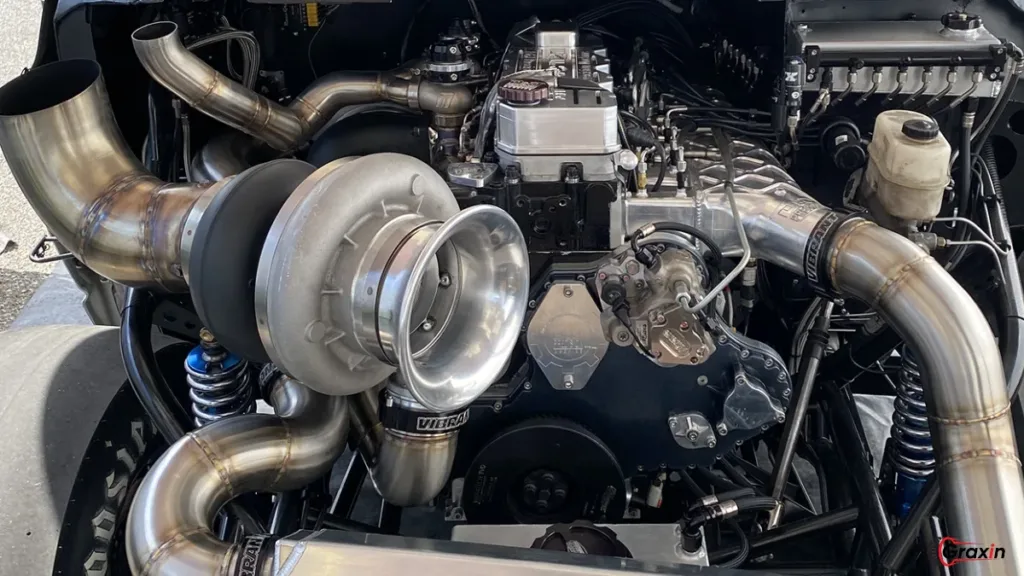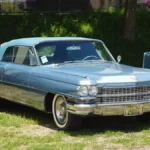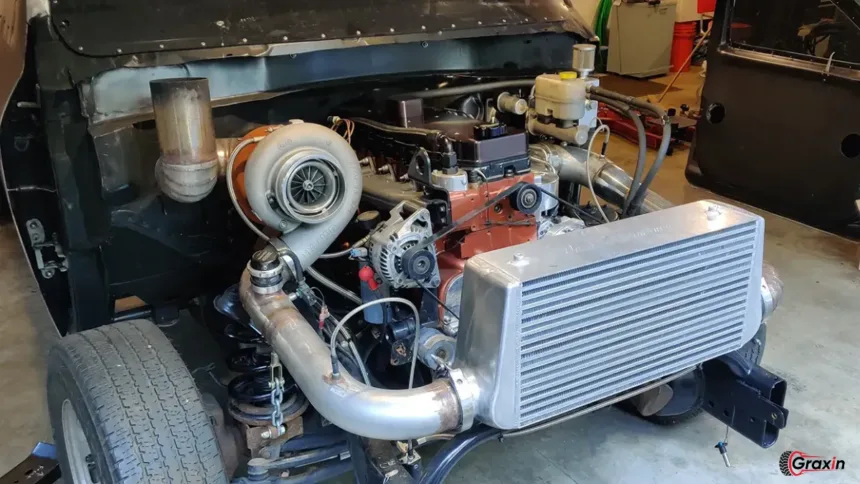Okay, so imagine this you’re at a party, and someone casually drops, “Hey, did you know there’s a diesel engine that cranks out 3,000 horsepower?” It’s the kind of thing that’ll make you stop mid-sip, right? I mean, 3,000 horsepower! That’s like strapping a herd of wild horses to a machine. It’s not your everyday engine we’re talking about here.
These monsters of mechanical engineering power everything from massive trucks to ships and trains. But before we dive headfirst into the world of these beasts, let’s take a step back and break it down in the simplest way possible. Buckle up this is going to be a fun ride!
What Is a Diesel Engine?
Diesel Engine Basics
First things first, what exactly is a diesel engine? Imagine your car’s engine, but beefed up with some serious muscle. Instead of running on gasoline like most regular cars, these engines run on diesel fuel, which gives them more power and better fuel efficiency perfect for the heavy-duty stuff.
And here’s a cool fact: diesel engines don’t even need spark plugs. That’s right. They ignite fuel using just the heat created from air compression. If that sounds a bit like magic, well, it sort of is!
Difference Between Diesel and Gasoline Engines
Let’s simplify this a bit. A gasoline engine is like your reliable morning coffee it gives you a quick boost but fades faster. A diesel engine, though? That’s like a hearty breakfast burrito. It’s got more staying power, burns slower, and gives you the energy you need for the long haul. No wonder they’re the go-to for big machines that need to work hard, like trucks and trains.
The Rise of the 3,000 HP Diesel Engine

Evolution of Diesel Engines
Diesel engines didn’t just wake up one day and decide to be powerful giants. They’ve been evolving for over a century, getting stronger, more efficient, and a lot more complex. Way back in the 1900s, you had engines that, well, got the job done. Today? We’ve got engines that can literally power cities.
Technological Innovations
Turbochargers, fuel injectors, and electronics have all gotten a massive glow-up over the years. Imagine your smartphone getting a software update it’s a bit like that. Every few years, these engines get smarter, faster, and way more efficient. It’s all about squeezing out more power while burning less fuel. Pretty genius if you ask me.
How Does a 3,000 HP Diesel Engine Work?
Power Generation Mechanism
Alright, here’s the nitty-gritty in simple terms: a 3,000 horsepower engine works by compressing air, mixing it with diesel fuel, and then igniting that mixture to create a controlled explosion. This explosion pushes pistons, which spin the crankshaft, and boom power is born! That’s the engine’s heartbeat, pumping out all that sweet, sweet horsepower.
Components Involved
It’s not just about the engine block; there’s a whole gang of components working together. Think of it like a superhero team turbochargers, intercoolers, fuel injectors all of them combining their powers to keep the engine running smoothly. Each part plays a crucial role, like how every Avenger has their own special ability.
Where Are 3,000 HP Diesel Engines Used?
Heavy-Duty Machinery
You won’t find these engines under the hood of your neighbor’s Prius, that’s for sure! They’re mostly used in heavy-duty machinery. Think bulldozers the size of small houses, or cranes that lift enough weight to build skyscrapers. Ever been near a construction site and seen one of those colossal machines? Chances are, it’s got one of these bad boys under the hood.
Transportation (Trains, Ships, Trucks)
Trains, ships, and some trucks the kind that haul around 40-ton loads are powered by these engines. The next time you’re stuck at a railroad crossing, just think, “Yeah, that train could have a 3,000 horsepower engine pulling it.” Kinda makes you appreciate the wait a little more, doesn’t it?
Advantages of 3,000 HP Diesel Engines
Fuel Efficiency
Despite their massive size, these engines are surprisingly efficient. They might not be sipping fuel like a hybrid, but for the amount of power they generate, they’re practically fuel-sipping champs. Imagine running a marathon and only needing a snack halfway through diesel engines are the marathon runners of the engine world.
Durability and Longevity
Diesel engines are built like tanks. They can run for years sometimes decades if you take care of them properly. In fact, with a little TLC, they’ll outlast just about anything. Kind of like that one old Nokia phone we all had that just wouldn’t quit.
Challenges of Operating a 3,000 HP Diesel Engine
Maintenance Requirements
But, of course, with great power comes great responsibility (thanks, Spider-Man). These engines aren’t exactly low-maintenance. Keeping one in good shape is like owning a high-maintenance pet. Skip a few oil changes or ignore some warning signs, and you could be in for some serious trouble. The last thing you want is to be halfway through a job and have your engine throw a tantrum.
Environmental Impact
And let’s talk about the elephant in the room diesel engines aren’t the greenest option out there. They emit more pollutants than gasoline engines, and while modern technology has cleaned them up a bit, they’re still not winning any environmental awards. That’s why the industry is always working on making them cleaner.
Performance Metrics

Torque and Horsepower Explained
If you’re wondering why torque and horsepower are such a big deal, here’s a simple way to think about it: torque is how much muscle the engine has, and horsepower is how fast it can use that muscle. So a 3,000 horsepower engine? Yeah, it’s like a bodybuilder running a sprint. Fast, powerful, and just a little bit terrifying.
Fuel Consumption and Efficiency
Sure, a 3,000 HP engine chugs fuel, but the good news is that it’s surprisingly efficient considering its size. Diesel engines are like that one friend who eats way more than anyone else but still somehow burns it all off. They’re high-performance machines that know how to use every drop of fuel effectively.
Famous Manufacturers of 3,000 HP Diesel Engines
Caterpillar
Ah, Caterpillar. The name itself brings to mind those giant yellow machines digging up the earth. Caterpillar engines are known for being reliable, and they’re all over the place in construction and mining. They’re like the Hulk big, strong, and built to smash through just about anything.
Cummins
Cummins is another heavyweight in the diesel engine world. Their engines are all about power and reliability, which makes them perfect for big rigs and industrial equipment. Cummins is like the workhorse of the engine world dependable, durable, and always ready to go the extra mile.
Applications in the Energy Sector
Backup Generators
Believe it or not, some facilities use 3,000 HP diesel engines as backup power sources. Imagine your local hospital during a power outage the lights don’t just flicker back on by magic. It’s often a big diesel engine kicking in to keep everything running smoothly.
Power Plants
In some parts of the world, diesel engines are used in power plants to generate electricity, especially in remote locations where there’s no easy access to a traditional power grid. They’re kind of like the backup plan for when the main system fails, keeping things running when everything else goes dark.
Future of High-Powered Diesel Engines
Innovations on the Horizon
The future is always bright, even for diesel engines. Manufacturers are working on making them more efficient and less polluting. Think of it like putting an engine on a diet—it still needs to pack a punch, but it’s got to do it cleaner and leaner.
Shifting to Greener Alternatives
There’s no denying that electric engines are coming up fast, but for the biggest, toughest jobs, diesel still reigns supreme. It’s kind of like comparing a Prius to a tank. Sure, the Prius is better for the environment, but it’s not going to help you build a skyscraper.
Comparing Diesel Engines to Electric Engines
Pros and Cons of Each
Electric engines are clean and quiet, but they still have a long way to go when it comes to raw power and range. Diesel engines, on the other hand, may be loud and a bit dirty, but they’re still the go-to for any job that requires serious muscle. It’s kind of like comparing a bulldog to a poodle—each has its strengths, but only one can really pull a sled.
Safety Concerns with High-Powered Diesel Engines
Proper Handling
Handling a 3,000 HP diesel engine is no joke. You need the right training, tools, and safety gear. It’s like trying to ride a wild horse you don’t just jump on without knowing what you’re doing. It takes skill, practice, and a healthy respect for what you’re dealing with.
Potential Risks
These engines are powerful, and with great power comes great potential for things to go wrong. From overheating to fuel leaks, you’ve got to keep an eye on everything. But don’t worry, with proper maintenance, most issues can be avoided.
Conclusion
So, there you have it the mighty 3,000 horsepower diesel engine, the unsung hero powering our trains, ships, and heavy machinery. These engines may not be glamorous, but they’re the workhorses that keep the world moving. And as technology evolves, we can expect them to get even better faster, cleaner, and more efficient. For now, though, they’re still the go-to for anyone who needs serious power.
FAQs
- What’s a 3,000 HP diesel engine used for?
Mostly in heavy-duty applications—think trains, ships, and big construction equipment. - Are these engines fuel-efficient?
Surprisingly, yes! For their size, they’re designed to be as efficient as possible. - Can a 3,000 HP diesel engine be eco-friendly?
They’re getting there. While they’re not the greenest yet, new tech is making them cleaner. - What kind of maintenance do they need?
Regular oil changes, fuel system checks, and careful monitoring of turbochargers and injectors. - Are electric engines a good alternative?
For some things, yes. But when it comes to raw power and durability, diesel is still king.
Also Read: Low Engine Oil Pressure: Causes, Symptoms, and Solutions







